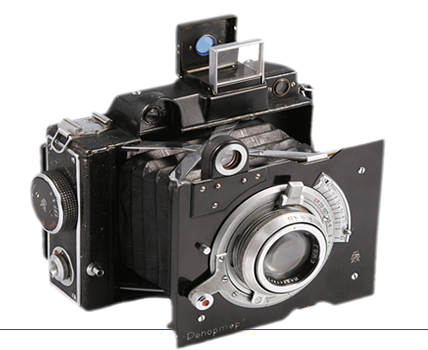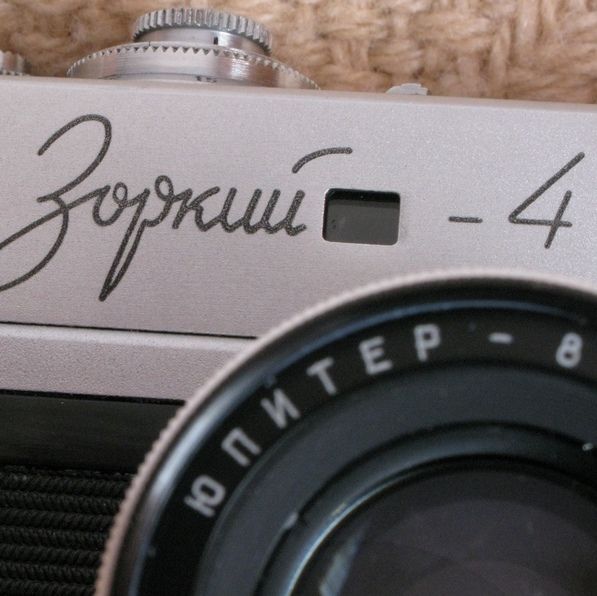| Author |
 Topic Topic  |
|
Jacques M.
France
2584 Posts |
 Posted - May 06 2016 : 08:49:15 AM Posted - May 06 2016 : 08:49:15 AM


|
Hello,
I have tried to ask a question I have put to myself since a long time:
what was the register used by Fed before WW2? Was it regular? Were the S-s regulated to the Leica 28,8mm, to make the changing of lenses easy, or not? So, I have checked around 100 of my cameras, with a simple caliper (2/100th mm) measuring the register at about 10h30, with always the same gesture.
The results in thelseves are not really interesting. I have neglected the thickness of the film, the filmplate, whose position can be uneven due to bad springs, etc. But the comparison of the results is interesting, I think.
During all the prewar period, there is no regularity. The results generally vary of one to five (!!) tens of a millimeter for cameras which seem in original condition. And there are differences which can reach up to 1mm, but these cameras are doubtful as for their original state. Note that the difference is always under 28,8mm, never above.
The two prewar S I have used regularly since I have them are both correct at 28,8mm... Only chance! And the regular NKVD I used too at 28,7mm, without problems for photos, so correctly shimmed.
For postwar cameras, same irregular results up to the end of the first 1f series (release button, speeds Z-1/20th..., s/n c. 300000). At the apparition of the 1f second series (bowled button, speeds B-1/25th), it's the miracle. Everybody is between 28,8 and 28,9mm (my measures). So, a normalisation in 1951/52, much later than what I thought.
I did the same with the Zorkis 1 I have: I have found a regular 28,8/28,9mm from my Fed-Zorki 1949. My other Feds and Zorkis are correctly regulated. All my Leicas too, including a 1930 (C) at 28,8mm too.
Nothing as a conclusion. But certainly, what a mess it was to regulate correctly a S with its four lenses...
Jacques.
|
|

Alexander K.
AlexanderK
Germany
584 Posts |
 Posted - May 06 2016 : 2:19:01 PM Posted - May 06 2016 : 2:19:01 PM


|
Hello Jacques,
factory adjustment of prewar FEDs was quite chaotic, so it was always specially suggested, that the camera should be adjusted after the purchase before the first usage. This adjustment was also offered in almost every photo-workshop. You had to take with you all your lenses you planed to use with the camera.
Regards, Alexander |
 |
|
Jacques M.
France
2584 Posts |
 Posted - May 06 2016 : 2:48:38 PM Posted - May 06 2016 : 2:48:38 PM


|
Thanks, Alexander.
I really wonder why Fed did not normalized all their production with the 28,8mm register before WW2.
It should have been easier, and useful, at least for the Fed S with its possible four lenses. And the precision (more or less 1/20th to 1/100th of mm) could have been obtained without problem.
So, the Plan? The necessity of full employ? Or the risk that Leica lenses could be used freely on Fed bodies? We'll never know!
Amitiés. Jacques. |
 |
|

Alfa2
Poland
349 Posts |
 Posted - May 06 2016 : 3:03:30 PM Posted - May 06 2016 : 3:03:30 PM


|
Jacques,
my friend art historian, who is much more experienced in collecting FEDs than me, told me the same what Alexander wrote. Register of FED NKVD was not standardised. He shown me how to adjust FED 100 mm to FED NKVD body and it took him 5 or 10 minutes.
Moreover,
Industar 10 should have S/N little greater than S/N of FED body. But after 2nd W.W. factory has terminated lens numbering and started counting from the beginning. They started maybe not from 1 but from 100 or 1000, I don't now.
There is a question why they started counting once again. Because register of "new serie" was standardized ? Maybe because "new serie" was coated ? Maybe there was complitely other reasen for that ?
Can you verify somehow above informations ?
|
Edited by - Alfa2 on May 06 2016 3:05:13 PM |
 |
|

Alfa2
Poland
349 Posts |
 Posted - May 06 2016 : 3:17:19 PM Posted - May 06 2016 : 3:17:19 PM


|
quote:
Originally posted by Jacques M.
I really wonder why Fed did not normalized all their production with the 28,8mm register before WW2.
It should have been easier...
It would be easier for users but not for factory.
It is easy to produce prototype, it is more difficult to come on stream (start production), it is the most difficult to have procuction where all items are the same (strictly standardized).
|
 |
|

Vladislav Kern
Vlad
USA
4247 Posts
My Collection
|
 Posted - May 06 2016 : 3:30:22 PM Posted - May 06 2016 : 3:30:22 PM



|
quote:
Originally posted by Alfa2
Jacques,
There is a question why they started counting once again. Because register of "new serie" was standardized ? Maybe because "new serie" was coated ? Maybe there was complitely other reasen for that ?
Can you verify somehow above informations ?
My guess is after the factory was re-evacuated back into Kharkov after the war no one remembered what the last number was  |
 |
|
Jacques M.
France
2584 Posts |
 Posted - May 06 2016 : 3:58:48 PM Posted - May 06 2016 : 3:58:48 PM


|
Thanks, Alfa.
Of course, I knew that prewar cameras were not standardized. Nevertheless, I put questions (to me) concerning the Fed S. And I always think it would have been easy to obtain the necessary precision, even for a mass production. Leica had done it in 1931, why not Fed in 1938?...
As to regulate properly a body and several lenses, it's not so evident.
You have first to check the register of the camera. Then, determine which of the lens has the shortest working distance. Then, you regulate the body with this working distance, with wafers, more or less (generally less!). Then , you regulate the other lenses you use, always at this shortest distance, one by one, always with wafers. Of course, all the material must be checked when the work is finished. And the rangefinder must be controlled too.
Generally, several hour's work. And not so easy...
As for lenses, it's a subject in itself. In the s/n 210000/300000 (for the bodies), we normally find coated and non coated lenses. But what happened really for the lenses after the war? I don't know. The story has to be written!
Amitiés. Jacques.
|
 |
|

Alfa2
Poland
349 Posts |
 Posted - May 06 2016 : 4:34:39 PM Posted - May 06 2016 : 4:34:39 PM


|
quote:
Originally posted by Jacques M.
Leica had done it in 1931, why not Fed in 1938?...
I think because of much less quality of production. Before WW 2 FEDs were mechanically and optically much worse than Leicas. Both productions were realized in complitely other reality. Moreover, FEDs were made by children while Leica by high qualified specialists. We cannot compare both situations/productions.
But in fact I was not there in that time  . .
|
Edited by - Alfa2 on May 06 2016 4:35:55 PM |
 |
|
Lenny
496 Posts |
 Posted - May 06 2016 : 4:50:54 PM Posted - May 06 2016 : 4:50:54 PM


|
| If the normal process was to regulate the camera in a workshop after purchase it kind of makes sense, because this is a type of camera for interchangeable lenses. Who knows what kind of lenses the customer already had and wanted to use too. Saving this adjustment in the factory saves money and the workshop could care the customers needs much better. Also these cameras need service to work well, always good to have a relation between customer and workshop from the start. What Leica did at the same time is a total different story, who could affort a Leica at that time. |
 |
|
Jacques M.
France
2584 Posts |
 Posted - May 07 2016 : 04:55:22 AM Posted - May 07 2016 : 04:55:22 AM


|
The differences are less important than it appears between Leica and Fed. Of course, Leitz had history, tradition, skilled workers, engineers, machine tools... But after the famous "we will make Leicas" from Makarenko in 1932, the Commune was gradually transformed in a true factory, with less teens and more and more skilled workers.
In 1938, Makarenko was not yet here, since 1935, and the factory under the Plan produced 30 to 35000 cameras a year. To compare with the 30 to 50000 Leicas at the same period: not ridiculous!. It's why I think of political and economical reasons rather than technical ones. Full employment of workers, and mass production chosen rather than technical progress.
Under all that, perhaps there is too a question of identity. To standardize the production would have lead to a complete interchangeability between Leica and Fed, and so complete comparisons. Wishable for the authorities? I don't know...
But some of us know that period much better than me. And like you, Alfa, I was not yet there!
Amitiés. Jacques. |
 |
|

Alfa2
Poland
349 Posts |
 Posted - May 07 2016 : 06:42:49 AM Posted - May 07 2016 : 06:42:49 AM


|
quote:
Originally posted by Vlad
My guess is after the factory was re-evacuated back into Kharkov after the war no one remembered what the last number was 
Ha, ha, ha, Vlad, great idea. 
Jacques, I'll try to explain reality of communistic industry in the evening.
|
 |
|
Jacques M.
France
2584 Posts |
 Posted - May 07 2016 : 07:23:01 AM Posted - May 07 2016 : 07:23:01 AM


|
Ah, if you talk of reality, I don't say anything else! |
 |
|

Alfa2
Poland
349 Posts |
 Posted - May 07 2016 : 4:21:01 PM Posted - May 07 2016 : 4:21:01 PM


|
In comunistic industry there were much less products on market than people could consume.
In capitalistic industry there is much more products on market than people can consume.
Comunistic industry was dirigisted (guided/steering centrally). There were "5-years plan". Somebody dediced how many flats, cars etc. should be produced within 5 years. Every factory knew how many products should be produced by the factory. State was owner of hole industry. It was forbidden to have private factory. There was no unemployment. Everybody had state guarantee to have a job. Comunistic propaganda was saying: "No unemployment in communistic country, next year we will produce 50 000 cars for people." and so on. Production was much smaller than needs of market so you could not buy many products in shops. You could buy it only on black market were prices were much higher than in shops. E.g I remember car Fiat 126p costed 69 000 zl in a shop (which was about 15 medium month salaries) but 126 000 zl on black market. If you had wanted to buy the car from factory you would have had to pay for it now and then you would have waited about 5 years until you got the car. If you don't agree on this conditions you could go by public transportation. You could not buy a car from West because equivalent of our medium salary on the West was about 20$ per month so people could not afford to buy used cars from West.
There was no notions like profit or competition. Communistic factory produced goods for people, nobody even thought about profit becuse production was sponsored by state. Factory should have done the plan. There ws no competition because people were waiting for products. Nobody cared about quality because goal was to do the plan which was measured in produced items.
I was obliged to work one month in such communistic factory.
So Leica ws not competition for FED because prices of Leica was so high that nobody could afford Leica. Also nobody thought about copmpetition by production planning.
Uuuuhh, I was trying to write it as short as possible. I hope you are not bored and it managed to you to read the text to this point. 
|
Edited by - Alfa2 on May 07 2016 4:38:38 PM |
 |
|
Jacques M.
France
2584 Posts |
 Posted - May 08 2016 : 04:05:07 AM Posted - May 08 2016 : 04:05:07 AM


|
No problem, Alfa. And many thanks for your summarized landscape!
I could say "I know, I know" but there is a great difference between knowing and living (or having lived). And no doubt, I think and argue like the Westie I am...
That said, I am probably stubborn, but, concerning Fed, I always put (to myself!) the same questions. Even if I perfecty understand your explanations!
From the outside, Fed had a normal evolution in the thirties. In appearance... They first make Leica II like cameras, then they add the 1/1000th and a series of lenses to obtain the S.
Perfect.
But they don't normalize anything to make easy the changing of lenses... Absurd, if not stupid. A complete nonsense. OK, that remembers me short stories by Mikhaïl Zochtchenko. Vlad's joke too! Of course, the planned economy, the system, full employment... but Fed could have been an exception. Of course, the planned economy, the system, full employment... but Fed could have been an exception.
We had that subject in discussion several times on the site. When some of us said that there was absolutely no normalization, even for the S-s, it seemed beyond imagination and I was dubious. Now, after some hours' checking on my cameras, I know!
Thanks, Alfa.
Amitiés. Jacques.
PS: the "extreme" measured registers are 27,6mm (early 1b) and 27,5mm !! (early Fed S). The 1b seems original. The S could have been regulated for several lenses, hence the very low register.
|
Edited by - Jacques M. on May 08 2016 04:06:15 AM |
 |
|

Alfa2
Poland
349 Posts |
 Posted - May 08 2016 : 3:21:35 PM Posted - May 08 2016 : 3:21:35 PM


|
Jacques, it is really pleasure to discuss with you. And it is good we think not the same way and have different opinions.
If we had the same opinions on everything this forum would be not needed because there would be nothing to discuss.  . .
Yes it was absurd they don't normalize anything. But they were not able to make normaliation because of technical problems. They would needed quality control. I'm sure you compared image quality of russian lenses so you could see it was very big problem even after WW2.
|
 |
|
Zoom
596 Posts |
 Posted - May 08 2016 : 4:00:33 PM Posted - May 08 2016 : 4:00:33 PM


|
quote:
Originally posted by Alfa2
In comunistic industry there were much less products on market than people could consume.
???
|
 |
|

Alfa2
Poland
349 Posts |
 Posted - May 09 2016 : 01:59:14 AM Posted - May 09 2016 : 01:59:14 AM


|
quote:
Originally posted by Zoom
quote:
Originally posted by Alfa2
In comunistic industry there were much less products on market than people could consume.
???
Zoom, what is not clear here ?
|
 |
|
Zoom
596 Posts |
 Posted - May 09 2016 : 08:00:24 AM Posted - May 09 2016 : 08:00:24 AM


|
quote:
Originally posted by Alfa2
Zoom, what is not clear here ?
Just clear: written nonsense (I wanted to write more harshly, but you'll be offended). |
 |
|

Alfa2
Poland
349 Posts |
 Posted - May 09 2016 : 10:52:32 AM Posted - May 09 2016 : 10:52:32 AM


|
quote:
Originally posted by Jacques M.
... the "extreme" measured registers are 27,6mm (early 1b) and 27,5mm !! (early Fed S).
So, only 0,1 mm of difference means it was normalized.
What about regular (not S) FEDs NKVD ? What was min. and max. register ?
|
 |
|
Jacques M.
France
2584 Posts |
 Posted - May 10 2016 : 03:45:33 AM Posted - May 10 2016 : 03:45:33 AM


|
quote:
What about regular (not S) FEDs NKVD ? What was min. and max. register ?
For regular NKVD-s: 27,6mm for this 1b s/n 7122, and 28,9mm for the 1b 12840.
As for S-s: 27,5mm for the s/n 59349 and 28,8mm for several of them, c and d.
Interesting to see that the register never exceeds 28,9mm. Even if they were not originally registered by the factory, one can think that these results facilitated the mounting of extra lenses.
But as already said, we must be cautious with these results. Cameras can have been regulated after. And I have a Leica fake which is visibly the result of a "bricolage", at 29,5mm.
Amitiés. Jacques. |
 |
|
Zoom
596 Posts |
 Posted - May 10 2016 : 07:45:52 AM Posted - May 10 2016 : 07:45:52 AM


|
quote:
Originally posted by Jacques M.
Interesting to see that the register never exceeds 28,9mm.
It's simple: pressing is easier (and so: more precisely) than stretching.
P. S. Mencken once said: "For every complex problem there is an answer that is clear, simple, and wrong." It's about "They would needed quality control." |
Edited by - Zoom on May 10 2016 07:51:04 AM |
 |
|

Alfa2
Poland
349 Posts |
 Posted - May 10 2016 : 11:34:35 AM Posted - May 10 2016 : 11:34:35 AM


|
Thank you Jacques, it is really very interesting.
|
 |
|
| |
 Topic Topic  |
|
|
|
